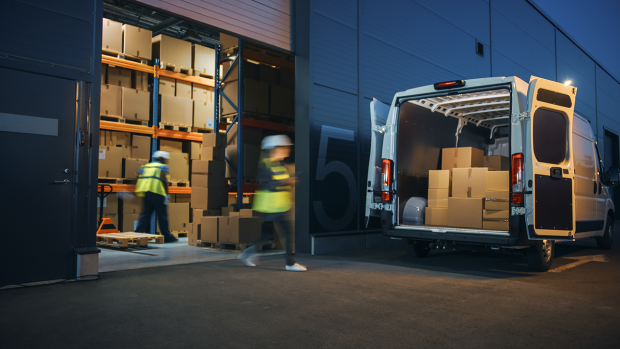A large-scale analytical residential parcel delivery model evaluating greenhouse gas emissions, COVID-19 impact, and cargo bikes

The e-commerce industry, which has seen remarkable growth over the past decade, experienced an even more accelerated surge in the wake of the COVID-19 pandemic. This exponential rise in online shopping has triggered a corresponding boom in the parcel delivery sector. However, a glaring gap exists in our understanding of the extensive social and environmental repercussions of this burgeoning industry.
To bridge this knowledge void, researchers at NYU Tandon led by Joseph Chow, Institute Associate Professor of Civil and Urban Engineering and Deputy Director of the C2SMARTER University Transportation Center, have proposed a comprehensive model to scrutinize the multifaceted impacts stemming from the parcel delivery surge. The model's architecture incorporates a parcel generation process, ingeniously converting publicly available data into precise figures detailing parcel volumes and delivery destinations. Additionally, a sophisticated continuous approximation model has been meticulously calibrated to gauge the lengths of parcel service routes.
The veracity of this model was subjected to rigorous examination through a real-world case study, employing a trove of data from the labyrinthine streets of New York City. Impressively, the parcel generation process demonstrated an impressive degree of fidelity to the actual data. Even more striking were the high R2 values, consistently hovering at 98% or greater, characterizing the model's ability to approximate reality. Validation of the model's output was further solidified by comparing it against the tangible UPS truck journeys.
Applying this model to the year 2021, it emerged that residential parcel deliveries in NYC constituted 0.05% of the total daily vehicle-kilometers traveled (VKT), equivalent to a staggering 14.4 metric tons of carbon emissions per day. The COVID-19 pandemic substantially contributed to a surge in parcel deliveries, culminating in an alarming annual greenhouse gas (GHG) emissions figure of 1064.3 metric tons of carbon equivalent (MTCE) within the city's boundaries. To put this in perspective, this is sufficient to power the homes of 532 standard US households for an entire year.
A ray of hope emerges in the form of NYC's existing bike lane infrastructure, which has the capacity to seamlessly replace 17% of parcel deliveries with eco-friendly cargo bikes, thereby precipitating an 11% reduction in VKT. By strategically augmenting this infrastructure with 3 kilometers of bike lanes connecting Amazon facilities, the cargo bike substitution benefit skyrockets from 5% to an impressive 30% reduction in VKT. The prospect becomes even more promising with the construction of an additional 28 kilometers of bike lanes citywide, potentially pushing parcel delivery substitution via cargo bikes from 17% to a remarkable 34%, concurrently saving an extra 2.3 MTCE per day.
Notably, the prioritization of cargo bike deployments holds the potential to disproportionately benefit lower-income neighborhoods, including but not limited to Harlem, Sunset Park, and Bushwick, by substantially curtailing GHG emissions in these communities.
Hai Yang, Hector Landes, Joseph Y.J. Chow, "A large-scale analytical residential parcel delivery model evaluating greenhouse gas emissions, COVID-19 impact, and cargo bikes," International Journal of Transportation Science and Technology, 2023, ISSN 2046-0430.





